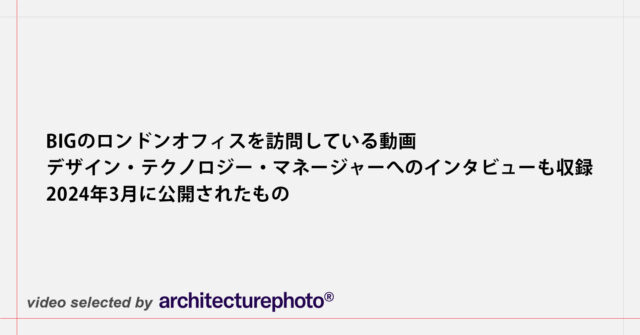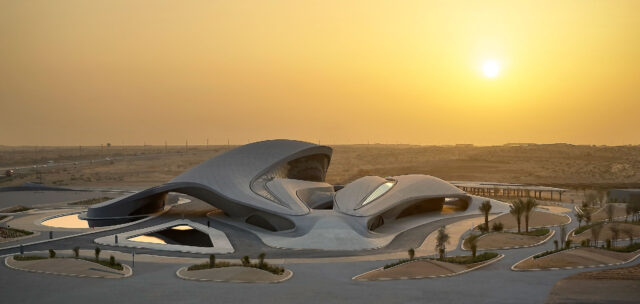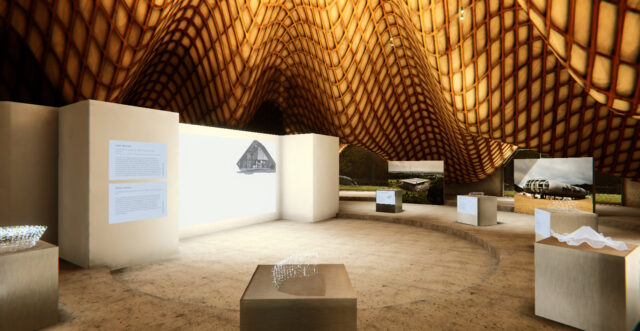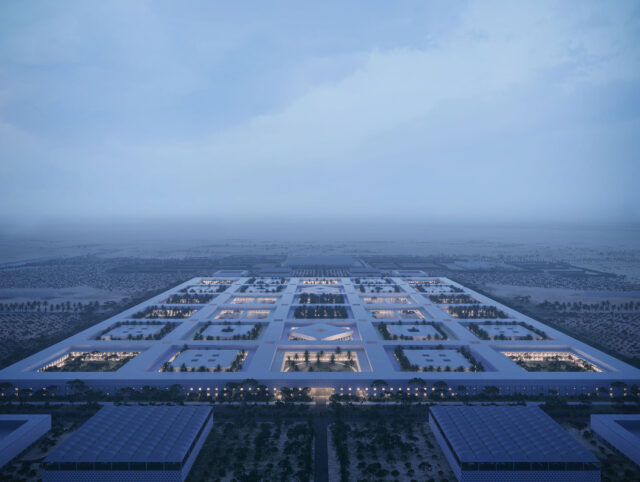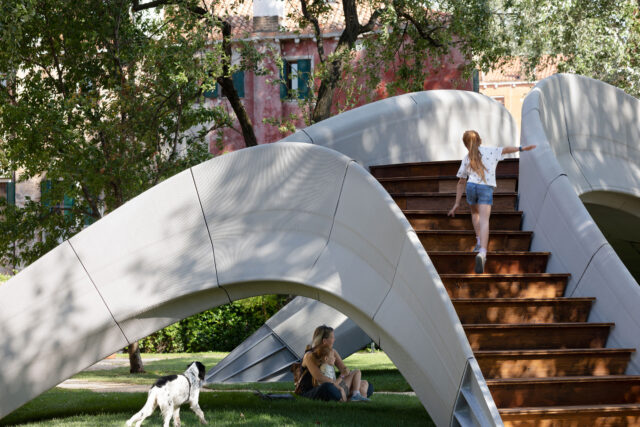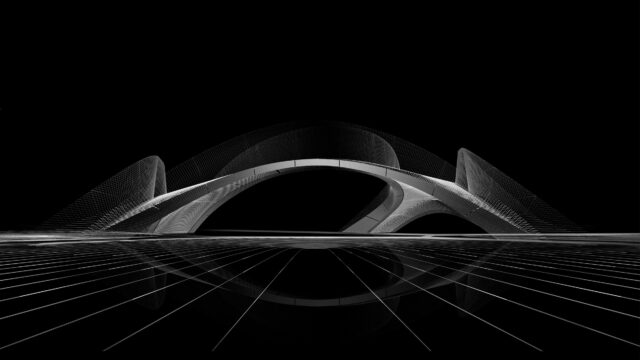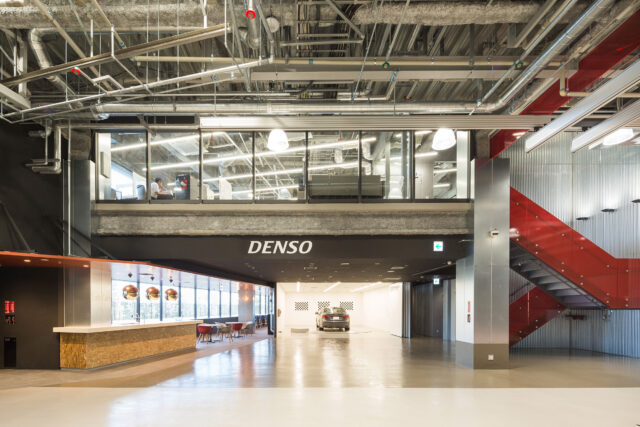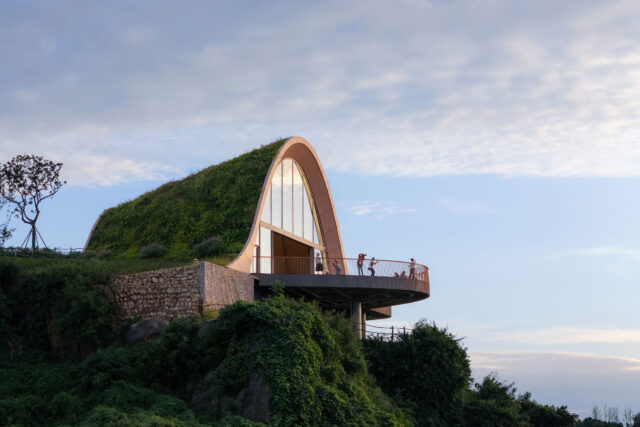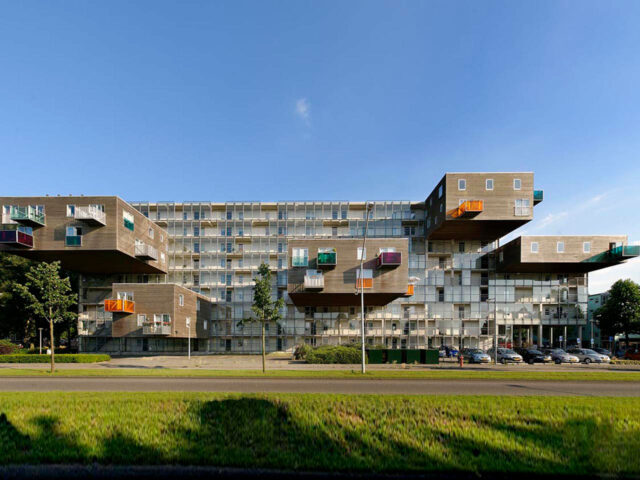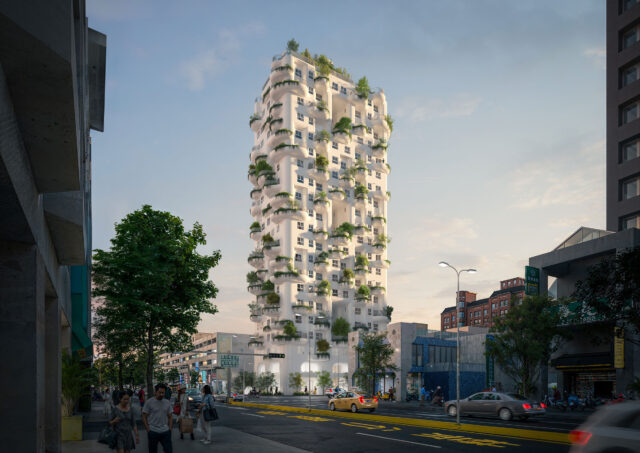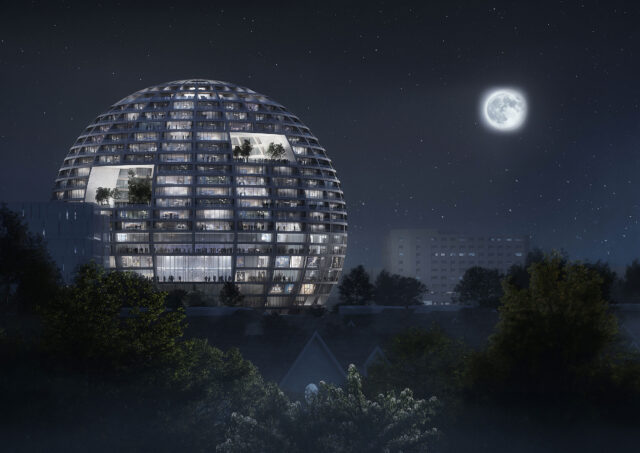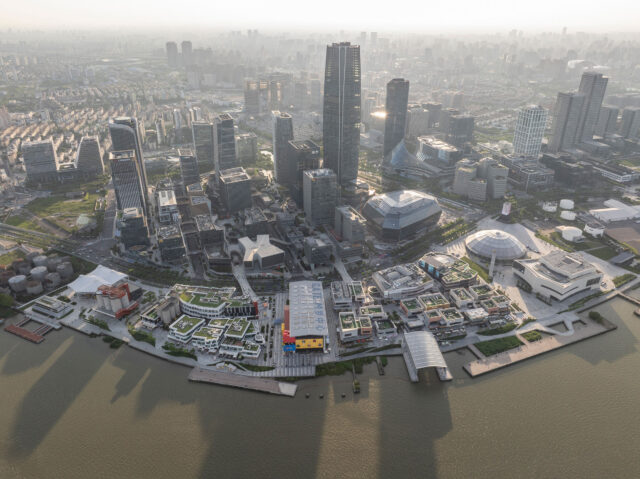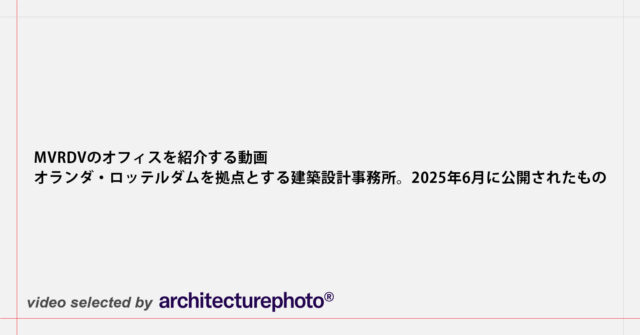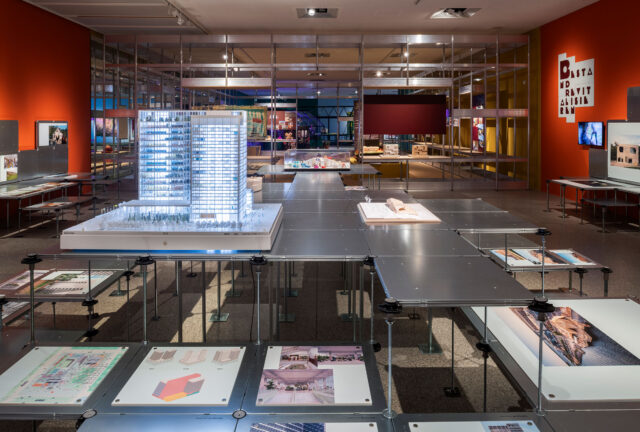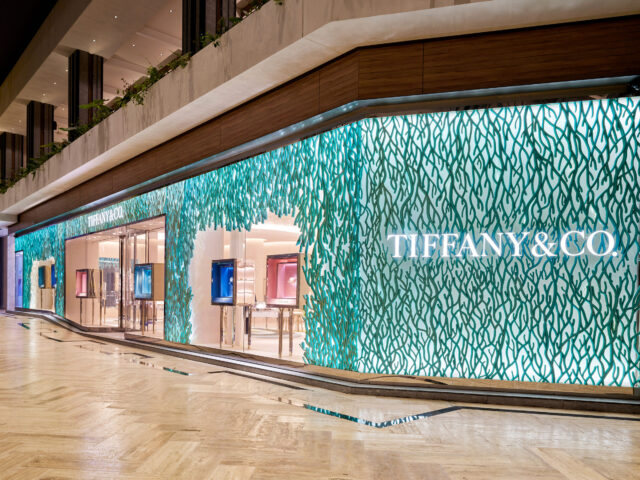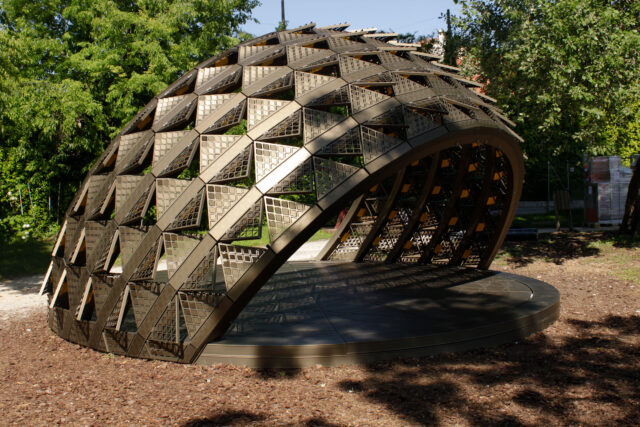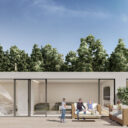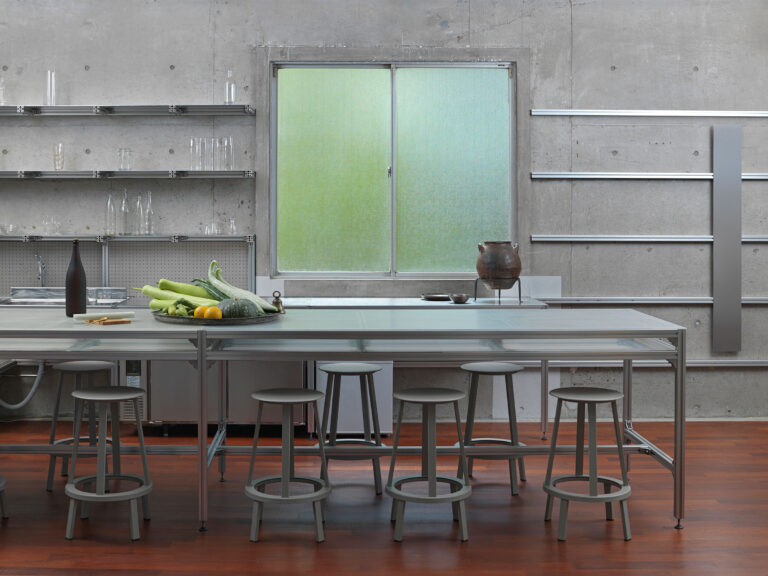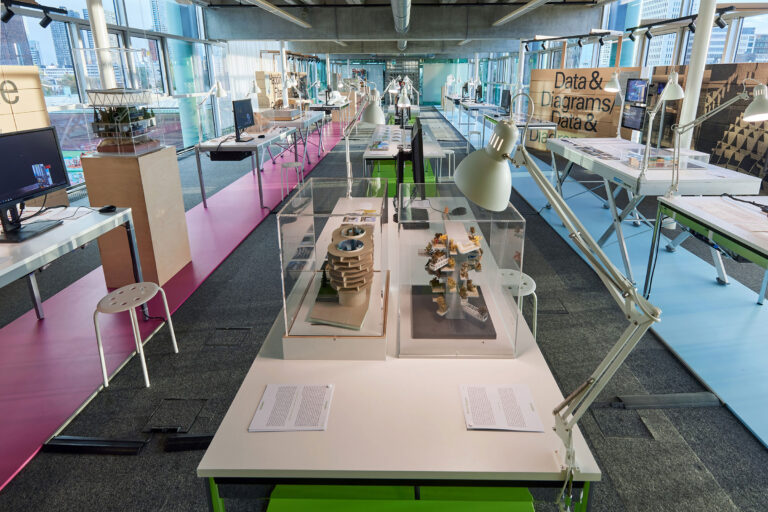
SHARE MVRDVによる、オランダ・ロッテルダムでの建築展「MVRDVHNI: The Living Archive」の会場写真。ファームの30年の歴史を“human” “green” “dream”の視点で表し、1993年に設立されたデジタル生まれの企業として、デジタルアーカイブを探索できるソフトウエアも開発
- 日程
- 2021年11月6日(土)–2022年9月4日(日)



MVRDVによる、オランダ・ロッテルダムのHet Nieuwe Instituutでの建築展「MVRDVHNI: The Living Archive」の会場写真。ファームの30年の歴史を“human” “green” “dream”の視点で表し、1993年に設立されたデジタル生まれの企業として、デジタルアーカイブを探索できるソフトウエアも開発されました。会期は2022年9月4日までとのこと。
以下は、リリーステキストの翻訳です
「MVRDVHNI: The Living Archive」では、MVRDVのヒューマンでグリーンな夢の創造の舞台裏を見ることができます。
現在、Het Nieuwe Instituutで開催中の「MVRDVHNI: The Living Archive」展では、MVRDVのデザイン哲学のルーツに迫ります。HNIの最上階で行われており、隣にあるMVRDVの最新作である「デポ・ボイマンス・ファン・ベーニンゲン」を圧倒的な眺望で見ることができます。「The Living Archive」展は、30年間の仕事を多層的に検証するものです。この展覧会では、MVRDVのプロジェクトとその背後にある進化したアイデアを紹介するとともに、作品の背後にあるデザインプロセスや、そうしたマテリアルを後世に残すための課題についても洞察しています。
展示されているプロジェクトは、ダーウィニズムの進化の年表に沿って並び、3つのテーマに分かれています。MVRDVの社会的な意識や人間を中心としたデザインを表す「human」、持続可能な目標を表す「green」、ユーザーに驚きを与えるような大胆で注目すべきプロジェクトを目指すMVRDVの野心を表す「dream」です。
「MVRDVHNI」の展覧会は、アーカイブを公開することを目的としているため、完成したデザインそのものだけでなく、デザインプロセスを示す資料にも焦点が当てられています。模型や写真だけでなく、スケッチや図面、素材のサンプル、クライアントに渡すプレゼンテーション用の冊子、エンジニアやコントラクターとのやりとりまで、さまざまな資料が展示されています。アナログカメラで撮影された写真は印刷されてテーブルの上に置かれ、デジタル写真は会場内に設置された多くのコンピュータ画面で見ることができるなど、可能な限りオリジナルのフォーマットで展示されています。
今回の展覧会では、まさにこのアナログとデジタルの境界線を意識した展示が行われています。MVRDVは1993年に設立された「デジタル生まれ」の企業で、ほとんどがデジタルのアーカイブを作成した最初の世代の企業のひとつです。2015年にアーカイブの最初の400プロジェクトをHet Nieuwe Instituutに寄贈したとき、この規模のデジタルアーカイブは同機関が取得した初めてのものでした。この膨大なファイルのコレクションにアクセスできるようにする従来の方法は失敗したため、アーカイブをさらに明らかにするための革新的なツールが作られました。MVRDV NEXTスタジオが特別に開発したデジタルソフトウェア「ProjectScape」は、訪問者が自分の調査ラインに沿ってプロジェクトを探索することを可能にします。Namelok社のソフトウェアは、MVRDVが撮影した画像に写っている人物を分析し、Giacomo Nanni & Francesca Morini社の検索エンジンは、MVRDVが送受信した何十万通ものメールの中から「サステイナビリティ」という言葉がいつ出てきたのかを確認することができます。
最後に、Het Nieuwe Instituutのキュレーションチームとのコラボレーションと対話により、このレイヤー構造の展覧会は複雑なマトリックスへと変化しています。彼らの「コレクション・スタディ」は、一連のプロジェクト全体を横断的に見て、MVRDVの作品におけるデータの価値、作品のビジュアル・コミュニケーションにおける人間描写の発展、白樺の木の継続的な存在などのトピックを調査しています。
MVRDVのパートナーであるヤン・クニッカー(Jan Knikker)は言います。
「MVRDVのアーカイブを紹介するこのモノグラフ展のために、最初の400のプロジェクトの意味を尋ねられたとき、私たちはこれらのプロジェクトを歴史的なものと宣言することに抵抗がありました」
「というのも、私たちの日常業務の中で、これらのプロジェクトはいまだに生き続けているからです。最初のプロジェクトから、2300年以降の未来を想定したプロジェクトまで、アイデア、哲学、タイポロジー、要素などが次々と登場します。したがって、本展では、これらの最初のプロジェクトの現在と未来を詳しく説明し、それらを人工物としてではなく、生きたアイデアとして捉えることが重要になりました。」
Het Nieuwe Instituutのジェネラル・ディレクター兼アーティスティック・ディレクターのアリク・チェン(Aric Chen)は語ります。
「この展覧会は、今日最も革新的な建築スタジオのひとつのダイナミックな活動に光を当て、企業、アーカイブ、研究者、その他の人々との対話が、建築実践の可能性についての理解をさらに深めることになるでしょう。」
この展覧会自体も、3つのテーマ、特に「green」のスレッドを象徴するものとなっています。MVRDVHNIには中古の家具が設置され、展覧会終了後にはその素材が再利用され、廃棄物の発生を最小限に抑えることができます。
MVRDVHNI: The Living Archive」は、2021年11月6日(土)にHNIのオープンハウスで開催され、HNIの歴史の中で最も多くの人が訪れた展覧会の一つとなりました。この展覧会は、2022年9月4日まで開催されます。11月15日の18:30からは、Het Nieuwe Instituutのディレクターであるアリク・チェン氏を中心に、MVRDVの設立パートナーであるヴィニー・マース氏、ヤコブ・ファン・ライス氏、ナタリー・デ・フリイス氏によるトークショーが行われます。
以下の写真はクリックで拡大します



















以下、リリーステキストです。
“MVRDVHNI: The Living Archive” provides a behind-the-scenes look at the creation of MVRDV’s human, green dreams
Now open at Het Nieuwe Instituut, the exhibition MVRDVHNI: The Living Archive looks into the roots of MVRDV’s design philosophy. Hosted in the top floor of HNI – with an unparalleled view of the firm’s most recent creation, the Depot Boijmans Van Beuningen, next door – The Living Archive is a multi-layered examination of thirty years of work. It highlights the projects and the evolving ideas behind MVRDV’s work while providing insight into the design processes behind those works, and the challenges of preserving such materials for future generations.
Projects in the exhibition are ordered according to a Darwinist evolutionary chronology, divided into three themes: “human”, which describes MVRDV’s socially conscious and people-centred designs; “green”, which speaks to its sustainable goals; and “dream”, which encompasses MVRDV’s ambition for bold, remarkable projects that inspire wonder in their users.
The MVRDVHNI exhibition is concerned with unveiling an archive, and as such, the focus is placed as much on the materials that show the design process as it is on the finished designs themselves. The exhibition contains not only models and photographs, but also sketches, drawings, material samples, presentation booklets delivered to clients, and even correspondence with engineers and contractors. As much as possible, the exhibition presents materials in their original format; for example, photographs originally taken on an analogue camera are printed and presented on tables, while digital photographs can be seen on the many computer screens placed around the exhibition space.
One aspect of the exhibition concerns itself precisely with this analogue-digital divide. MVRDV, founded in 1993 and ‘born digital’, was among the first generation of firms to create a mostly digital archive; when it donated the first 400 projects in its archive to Het Nieuwe Instituut in 2015, it was the first digital archive of this size the institution had ever acquired. Traditional methods of making this vast collection of files accessible failed, and therefore innovative tools have been created to further reveal the archive: ProjectScape, a digital software developed specially for this purpose by the MVRDV NEXT studio, allows visitors to explore the projects according to their own lines of investigation. A software by Namelok analyses the people in the images by MVRDV, while a search engine by Giacomo Nanni & Francesca Morini allows visitors to check when a word such as “sustainability” emerged in the hundreds of thousands of emails the practice has sent and received.
Finally, the collaboration and dialogue with Het Nieuwe Instituut’s curation team transforms this exhibition of layers into a complex matrix. Their “collection studies” take a cross-sectional look at the entire set of projects, investigating topics such as the value of the data in MVRDV’s work, the development of human depictions in the visual communication of the work, or the continuous presence of birch trees.
“When asked about the meaning of the first 400 projects for this monographic exhibition featuring the MVRDV archives, we were reluctant to declare these projects historic”, says MVRDV partner Jan Knikker. “This is because in our daily practice they are still very much alive. From the very first projects to projects that envision a future in the year 2300 and beyond, there are ideas, philosophies, typologies, and elements that continuously reappear. It therefore became important for the exhibition to elaborate on the present and future of these first projects, and not to view them as artifacts, but living ideas.”
“This exhibition will shed light on the dynamic workings of one of the most innovative architecture studios today, and how a dialogue between the firm, its archive, researchers, and others can further enrich our understanding of the possibilities of architectural practice”, says Aric Chen, the General and Artistic Director of Het Nieuwe Instituut.
The exhibition itself is also emblematic of the three themes, particularly the “green” thread: MVRDVHNI will be furnished with used furniture and, after the exhibition, the material will be reused to generate minimal waste.
MVRDVHNI: The Living Archive opened with an open house celebration at HNI on Saturday November 6th, becoming among the most visited exhibition openings in the history of HNI. The exhibition will remain on display until September 4th 2022. At 18:30 on November 15th, there will be a talk show led by Het Nieuwe Instituut director Aric Chen with the founding partners of MVRDV Winy Maas, Jacob van Rijs, and Nathalie de Vries:


